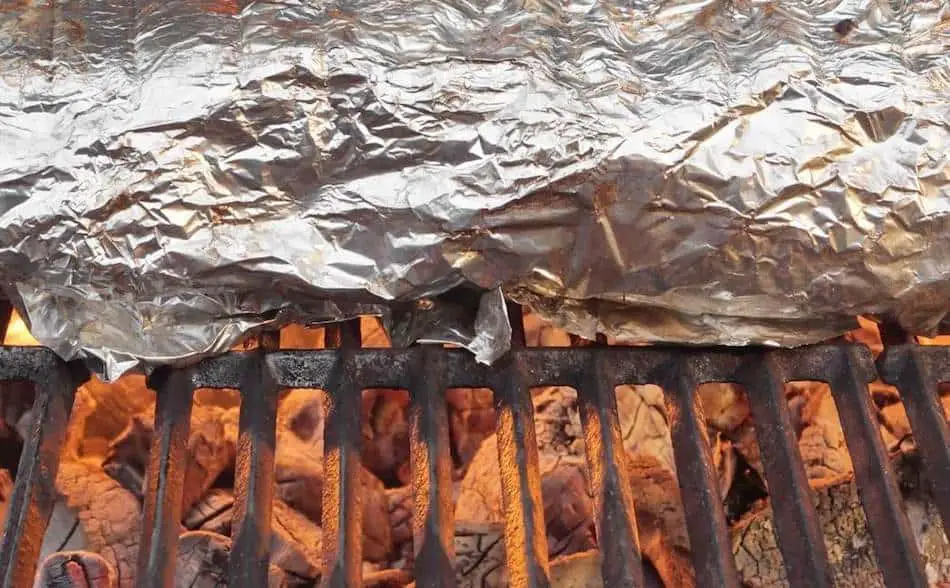
Wrapping your brisket is an important step in the smoking process because it helps the meat retain moisture, creates steam and helps the brisket push through the stall. Aluminium foil is the most common way of wrapping barbecue meat, but in recent years, pink butcher paper has become a popular trend. I wanted to find out which one is better, so I did some research.
Wrapping brisket during the smoking process is important to retain moisture, create steam, and help the meat push through the “stall.” Aluminium foil and pink butcher paper are both commonly used for this purpose, but they have different effects on the finished product. Foil traps steam and can result in a softer bark and a “pot roasty” flavor, while butcher paper allows the meat to breathe, resulting in a firmer bark. While foil is more readily available and inexpensive, many BBQ enthusiasts prefer to use butcher paper for a better bark and flavor. It’s important to note that traditional butcher paper and kraft paper should not be used for wrapping brisket, and only food-grade pink/peach butcher paper should be used.
Key Points
- Wrapping brisket during the smoking process helps retain moisture and create steam
- Aluminium foil and pink butcher paper are both commonly used for wrapping barbecue meat
- Butcher paper allows meat to breathe, resulting in a firmer bark, while foil traps steam and can make the bark soggy
- Foil may also result in a “pot roasty” flavor
- Heavy-duty foil can be used to wrap brisket, with optional beef tallow added before wrapping
- Butcher paper should be wrapped around brisket in two layers, with optional beef tallow added and a thermometer probe inserted
- Butcher paper used for brisket is different from coated baking paper or parchment paper
- Kraft paper and traditional butcher paper should not be used for wrapping brisket
- Butcher paper is generally preferred over aluminium foil for wrapping brisket due to its ability to allow meat to breathe and resulting in a firmer bark.
Pros And Cons
Pros and cons of using aluminium foil and pink butcher paper for wrapping brisket:
| Wrapping Material | Pros | Cons |
|---|---|---|
| Aluminium Foil | Inexpensive and readily available | Traps steam, resulting in a softer bark and potentially a “pot roasty” flavor |
| Pink Butcher Paper | Allows meat to breathe, resulting in a firmer bark | May be harder to find in stores |
A Foil Wrapped Brisket vs Butcher Paper Comparison
| Wrapping | Cost | Cooking Speed | Bark | Juiciness | Taste |
| Aluminium Foil | Inexpensive | 5/5 | 2/5 | 5/5 | Pot Roasty |
| Butcher Paper | $20-$30 | 4/5 | 4/5 | 4/5 | Beefy |
| Unwrapped | Free | 2/5 | 5/5 | 3/5 | Very Smokey |
A Foil Wrapped Brisket
Aluminium foil is the most common brisket wrapping because everyone has a role at home and it’s inexpensive. Foil will prevent the brisket from drying out, however, it will soften the bark. Aaron Franklin describes the flavor of a foil wrapped brisket as ‘pot roasty’. Franklin prefers to use butcher paper, which he believes preserves the brisket’s beefy flavor.
How To Wrap Brisket In Foil
- Buy heavy-duty foil because you don’t want any holes where steam or liquid can escape.
- Before you place your brisket in the foil, lay out two long strips alongside one another, but overlapping a few inches.
- *Optional. Before laying the brisket in the foil, pour beef tallow into the indented area of the foil.
- Lay the brisket in the foil, then carefully wrap the brisket as tight as you can without any of the liquid escaping. The liquid will create a steam effect and almost braise the meat.
- Insert a thermometer probe into the side of the brisket and place the meat back into the pit.
Butcher Paper vs Foil
Aluminium foil is the easiest way to wrap brisket, however, butcher paper is an alternative. Foil and paper will both keep a brisket moist, but they will have a different effect on the bark, the texture, the flavor, and the total cook time. Foil and paper will both give the brisket bark a different texture, so experiment with both to see which one you prefer. First and foremost, the job of the wrapping is to prevent the meat from drying out.
How To Wrap Brisket in Butcher Paper
- Lay out a two long strips of butcher paper, spreading the second sheet to make the area wider.
- Place the brisket along the paper fat side up.
- Wrap the brisket in two layers of butcher paper and it should be tight around the point and flat of the brisket.
- On the inner layer, tuck and fold the paper around the flat of the brisket so it is secure.
- If you have some beef tallow, pour it underneath the brisket.
- Insert a thermometer probe into the brisket and place back in the smoker.
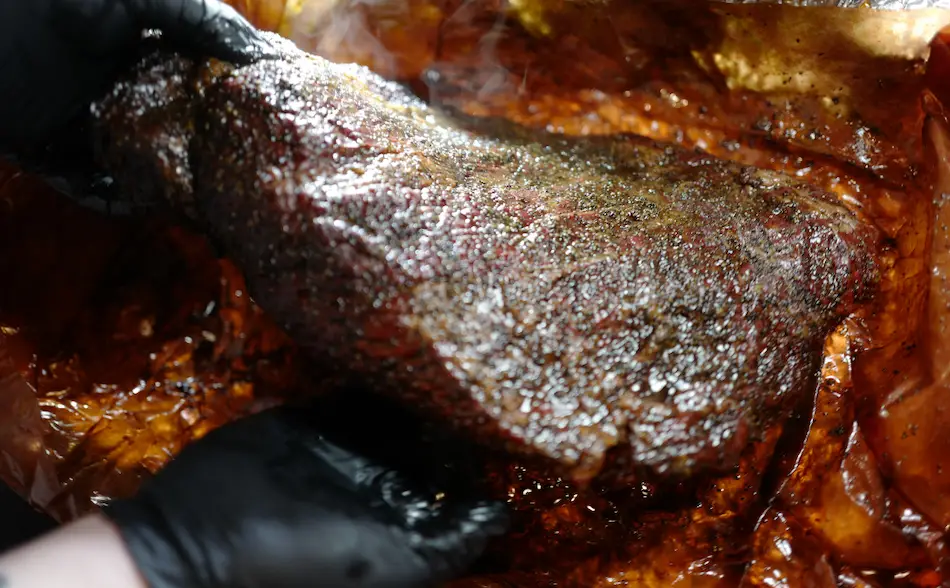
Is Butcher Paper the Same as Baking Paper?
The butcher paper used for brisket is different from a coated baking paper. Wax coated paper or paper with silicon coating are not suitable for wrapping brisket. The food grade paper used for brisket is very a specific type of paper that you can only find online, because it’s hard to find in stores. There are a few different types of butcher paper, but the pink paper used by Aaron Franklin is the most common used for brisket. You can purchase a roll on Amazon here.
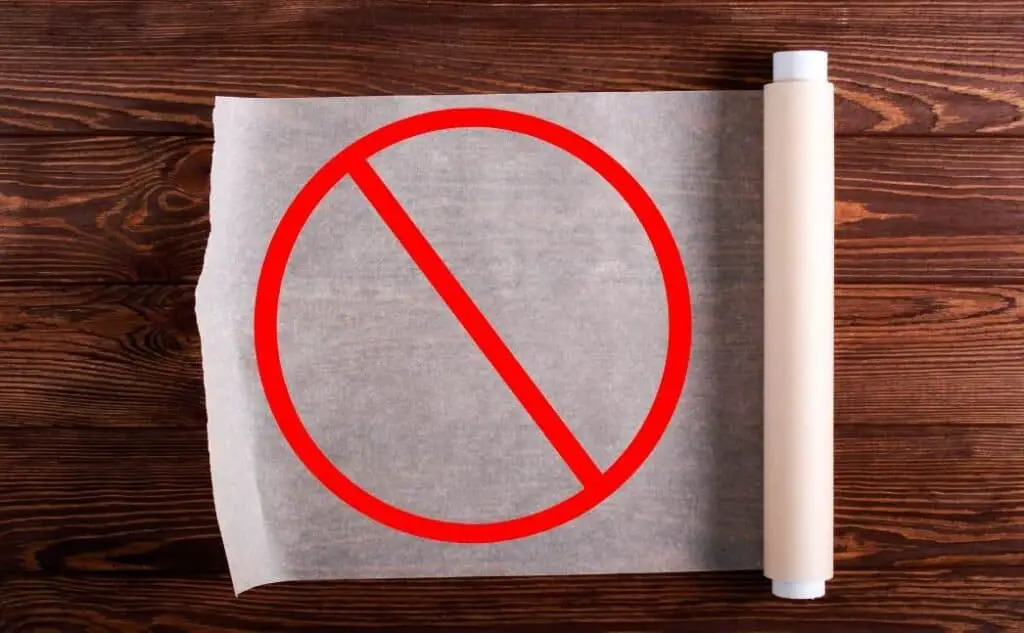
Is Butcher Paper the Same as Parchment Paper?
Also known as wax paper or baking paper, parchment paper is a non-stick heat-resistant paper that contains silicone, and isn’t suitable for wrapping brisket. The butcher paper used for smoking meat is food safe and heat-proof, and is without wax or silicone.
Can you Wrap Brisket with Kraft Paper?
Traditional butcher paper and kraft paper look similar, but neither is suitable for cooking. Traditional butcher paper and kraft paper are essentially the same thing, except traditional butcher paper is FDA approved and designed to absorb moisture. However, neither should be used to wrap your brisket, and the pink/peach butcher paper should be used instead.
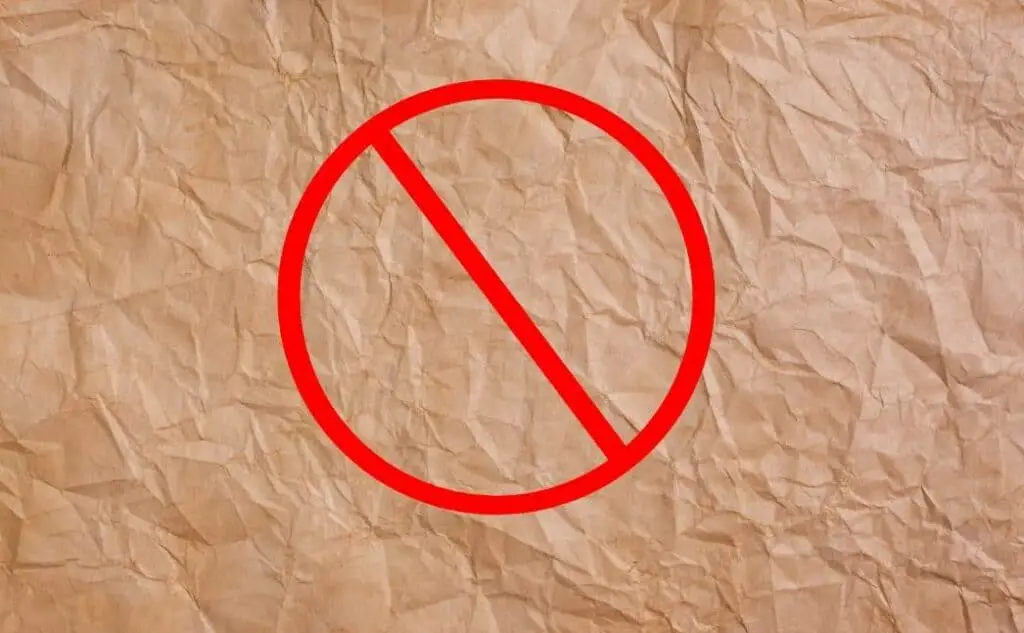
Is Butcher Paper Better than Aluminium Foil?
Butcher paper will help you get a better bark on your brisket because paper is able to breathe better than foil. Aluminium foil traps all the steam inside the package and will soften the bark. Butcher paper will help the brisket breathe while also preventing the bark from drying out. The bark is the crust, or the hard outer layer of the brisket. It’s important to develop a good bark prior to wrapping, because it will soften once inside the wrap.
Different Types of Butcher Paper – Pink and Peach Paper
It can be confusing trying to figure out the differences between all the different butcher paper. The traditional paper your butcher uses to wrap your meat in the butcher shop is not the same as the pink or peach butcher paper that is popular among barbecue enthusiasts. It’s important to buy the right type of paper otherwise you will start a fire or put your health at risk by using non-food grade paper. The pink butcher paper is FDA approved and is safe to use in ovens and barbecues.
Butcher Paper Comparison – The Best On The Market
So when buying butcher paper, make sure you’re getting the correct food-safe paper that’s suitable for cooking. Since the popularity of barbecue has increased, there are now dozens of different products on the market. I find the butcher paper from big brand names such as Traeger or Pitboss are too expensive, and there is much better value for money on Amazon. One of the most important things to consider is the width of the paper. If using a wide role, you end up using less paper because you don’t need two strips.
The History of Cooking With Paper
People have used paper in cooking for hundreds of years, and in Europe, they often served meat wrapped in paper. They commonly used this cooking method for cooking fish and chicken with vegetables, butter and herbs and spices, while wrapped in a neat parcel where the steam combined with the meat juices, creating amazing flavors and aromas. In the world of barbecue, butcher paper was first used in Texas barbecue restaurants and took off from there. Brisket master and restaurant owner Aaron Franklin popularised butcher paper in recent years, which seems to have sparked the latest trend.
When to Wrap Brisket
Leave the brisket to cook uncovered for the first part of the long cook, so the meat can absorb smoke and develop a bark or crust on the outer layer of the brisket. Once the meat is a dark reddish color and the internal meat temperature has reached between 150°F and 170°F, then it’s time to wrap the meat.
After wrapping, return the meat back to the smoker and cook until the brisket reaches a 203°F internal. Make sure to keep the brisket in its wrapping during the resting/holding period. Resting is an essential stage of the cooking process, and a brisket can sit in a dry cooler for up to four hours in the holding phase before slicing. By allowing the meat to rest in the wrapping, the brisket will reabsorb fat and meat juices that would otherwise spill out onto the cutting board without adequate rest time.
Why Wrap Brisket?
Wrapping is an essential stage of the process if you want a moist, tender brisket. Wrapping the brisket with a small amount of liquid will create a steaming effect and almost braise the meat. Not only does wrapping help the meat remain moist, it also helps it cook faster. Brisket stalls once the internal temperature hits 150°F and will take forever to climb to 203°F. This happens because at this stage of the cook, the brisket will begin to sweat. This evaporation will cause moisture to move to the surface of the meat and have a cooling effect. Wrapping will help the meat climb to the target internal temperature much sooner because the wrapping will trap all the steam inside the parcel.
Can You Smoke Brisket Uncovered?
There are some pitmasters who smoke their brisket uncovered, however, you need to get everything else right before you go down that path. Those who choose not to wrap are more concerned about a crunchy bark. If you don’t wrap the brisket, then it will take longer to cook. Wrapping helps the meat push through the stall and will save you a few hours. Smoking brisket uncovered carries the risk of drying out the meat, but if you keep the temperature low, mop the meat regularly, inject and dry brine prior to cooking, then you will increase your chances of success.
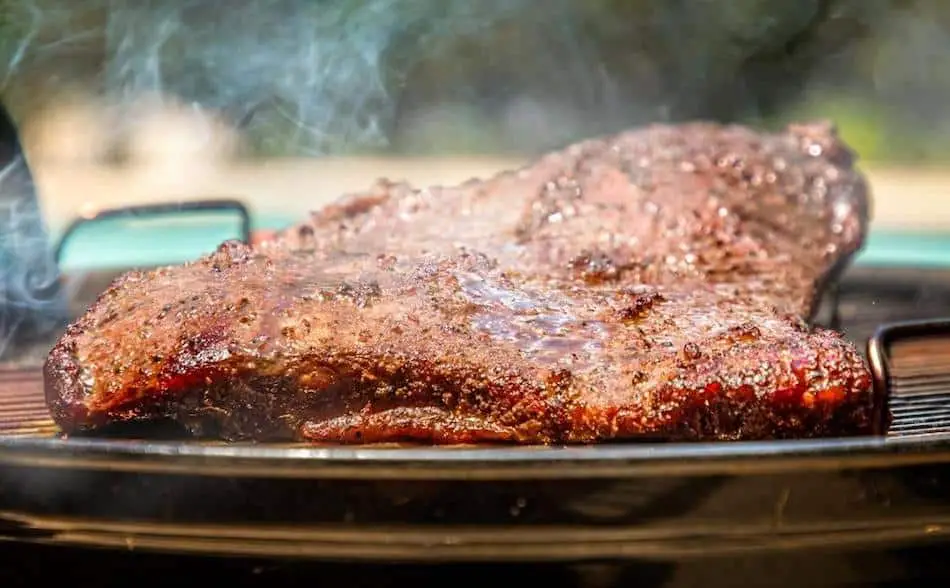
Does Wrapping Brisket Soften the Bark?
Unfortunately, wrapping brisket will soften the bark, making it soggy. However, there is a way around it. Some people finish their brisket in the oven or place it back on the smoker just before slicing. To follow this method, smoke the brisket as normal. Develop a hard bark in the first part of the cook and then wrap once the meat hits 150°F. Cook the brisket until the internal temperature reaches 203°F and then remove from the smoker. Leave the brisket to rest in its wrapping for at leat one hour. Just before slicing, place the brisket in an oven or back over the flames in your smoker. Rotate the meat and allow the high-heat to dry out the bark.
